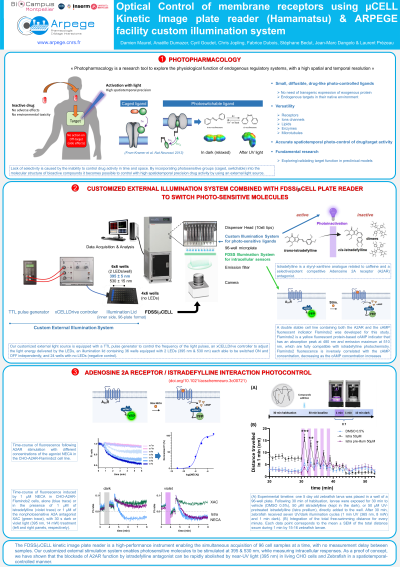Screening Applications & Diagnostics
Poster Session B
(1095-B) Optical Control of Membrane Receptors using µCELL Kinetic Image plate reader (Hamamatsu) & ARPEGE facility custom illumination system
Wednesday, May 29, 2024
10:30 - 11:15 CEST
Location: Exhibit Hall

- DM
Damien Maurel, Dr
Facility Manager
CNRS
Montpellier, Languedoc-Roussillon, France
Poster Presenter(s)
Abstract: A common difficulty in pharmacology comes from the broad expression of a given target, which emphasizes the need for temporally and spatially selective drugs to reduce the risk of side effects. One way to circumvent this difficulty is photopharmacology, an emerging light-based strategy to manipulate biological processes with high spatiotemporal precision. This relies on the use of photosensitive ligands, which allows the photocontrol of the drug-target interaction and its consequent biological activity. Characterization of photosensitive ligands requires the development of specific devices allowing the delivery of defined wavelengths with high-enough light energy to rapidly switch molecules from one state to the other (active vs inactive). To that aim, we have developed on the ARPEGE facility, in partnership with DIPSI company, a system that combines the measurement of fluorescence signals from light-based biosensors by the FDSS/µCELL Kinetic Image plate reader (microplate reader, Hamamatsu Photonics) with an additional top illumination system to specifically photocontrol the activation of photosensitive ligands. In collaboration with Dr. Lebon and Dr. Goudet team, we validated our custom illumination system to analyze the action of istradefylline, a well-known adenosine 2A receptor (A2AR) antagonist.
